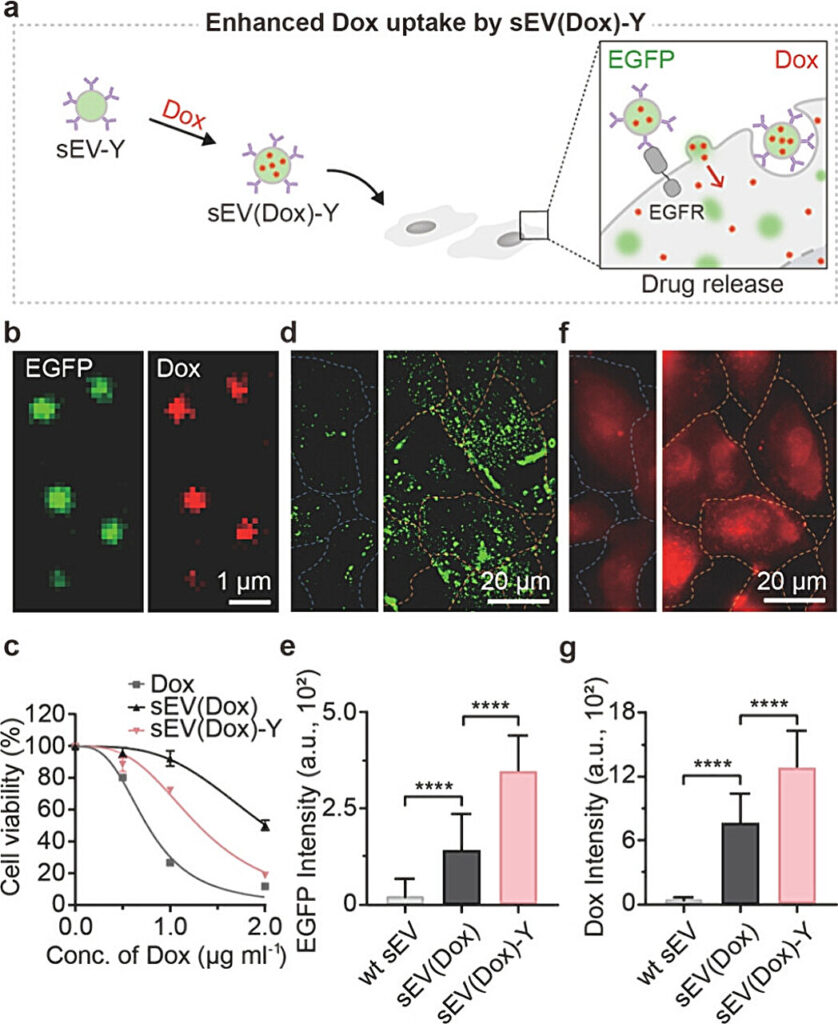A joint research team has developed a modular protein adapter technology that enables the stable attachment of various substances to the surface of extracellular vesicles (exosomes). It was designed to enable functional molecules to bind efficiently, even in the complex environments of cell membranes. The research demonstrated the potential for the development of tailored therapeutics.
The research team was led by Professor Kyungmoo Yea from the Department of New Biology and Professor Daeha Seo from the Department of Chemistry and Physics at DGIST and conducted in collaboration with Professor Moon-chang Baek’s team from the School of Medicine at Kyungpook National University.
The paper is published in the journal ACS Nano.
Exosomes play a crucial role in intercellular signaling and have attracted attention as next-generation drug delivery carriers due to their naturally occurring properties in the body. However, conventional methods of modifying the surface of exosomes through chemical reactions carry the risk of structural damage or functional degradation. Moreover, these methods have limitations in accurately quantifying the attached substances.
To overcome these limitations, the research team has developed a protein adapter-based platform technology. This newly developed technology is designed to stably attach various functional substances to the surface of exosomes without directly modifying their surfaces. Experimental results confirmed the feasibility of producing tailored exosomes using this approach.
In addition, the team successfully quantified the amount of drug attached to individual exosomes using super-resolution microscopy. This achievement helps address the lack of quantitative analysis methods in conventional drug development and enhances the clinical applicability of exosome-based therapeutics. In particular, the team demonstrated that exosomes conjugated with antibodies can effectively target cancer cells and improve anticancer efficacy.
Professor Yea of DGIST stated, “This research brings us closer to developing next-generation therapeutics using exosomes. We expect this platform technology, which supports the modular assembly of functional elements, to facilitate the development of therapeutics optimized for various diseases.”


